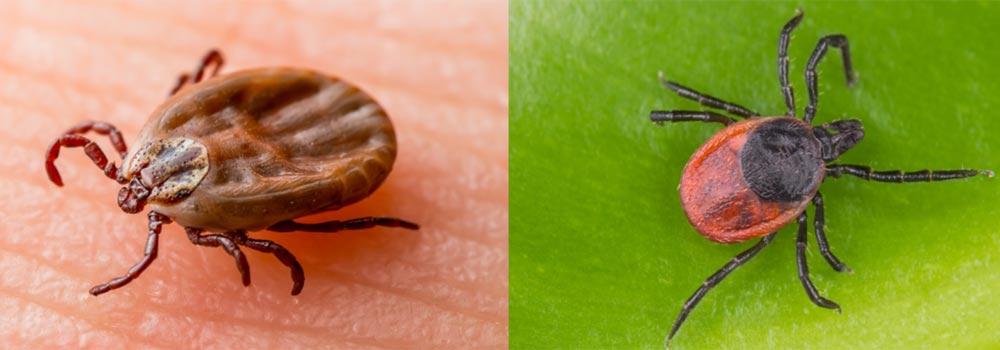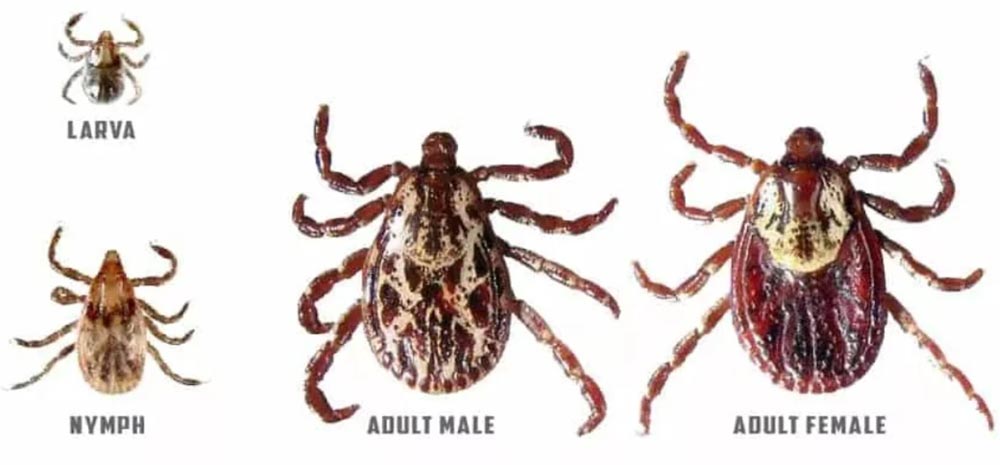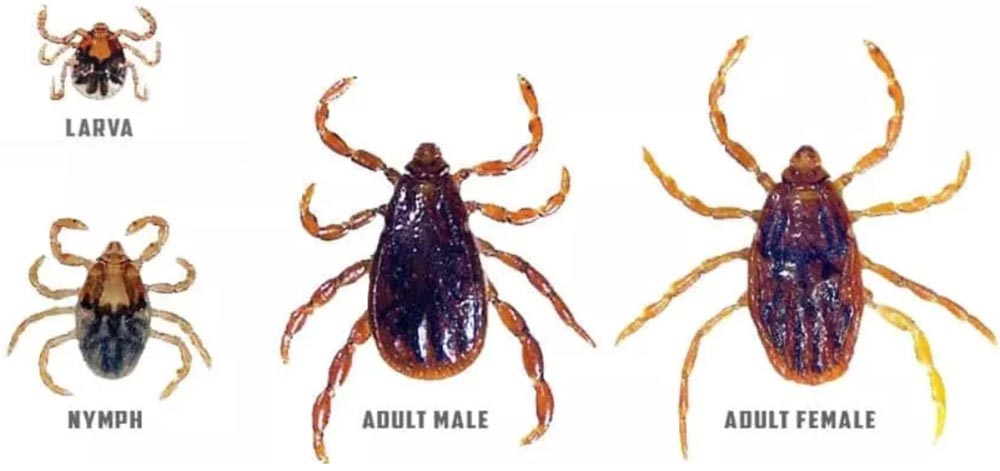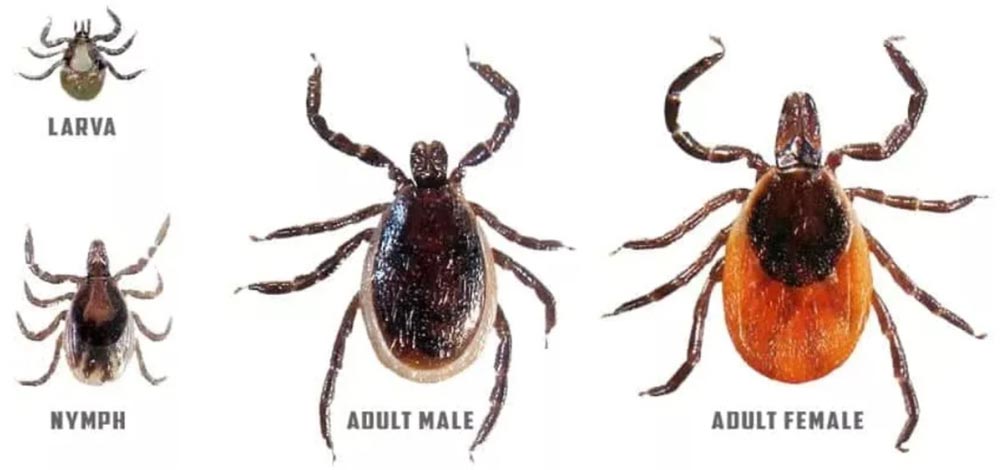
Shilo Stag
Here in Shilo and its vast hinterland, some of us have lost the battle dealing with wood or “dog ticks” while enjoying hikes through grassy areas with our canine companions in and around the Base or perhaps on the Sprucewood trails.
With the temperature warming up with the advent of spring, tick season begins. Golfers at the Shilo Country Club are advised to leave errant balls if they slice off into the rough, if you want to avoid a hitchhiker while searching for it.
Ticks are noticeable, too, at Camp Hughes if you are planning to hike and explore the Great War training grounds.
There are two types of ticks — wood or deer (black-legged) — which cannot fly, but they hang on to tall grass with their little front legs outstretched and grab on when someone or something brushes past unsuspectingly.
The wood tick is a parasite which does not transmit diseases, but the deer tick does carry a bacterium called Borrelia burgdorferi which can cause Lyme disease. This bacterium is spread to the host when the tick bites.
What makes this tick more of a pest is that the deer or black-legged ticks are active from spring and well into the late fall months — remaining active until the first permanent snowfall or when air temperatures are consistently below four degrees Celsius.
What about tick removal once you return home following an outdoor excursion?
This is important if you recently were posted to this Base from areas of Canada not experiencing ticks.
The majority of individuals are unaware they have been bitten by a tick as the bites are usually painless.
When a tick is found attached on your body, removal can become tricky, especially if you are alone and the tick is on a hard-to-reach area.
Ticks are most effectively removed with a fine pair of tweezers. The tick should be grasped as close to the skin as possible. The feeding site should then be cleaned after the tick is removed.
Other methods such as using Vaseline, a match or soap is not recommended and can cause the insect to burrow deeper and release more saliva, which increases the chances of disease transmission.
For soldiers, the tick you remove can then be placed in a small crush-proof bottle with a piece of moistened paper towel and taken to the Preventive Medicine department — Base hospital — for identification. Take note of where you are bitten by any tick.
If you see any unusual or extreme reaction to the bite, see your family doctor.
Occasionally some people may develop a secondary infection from a wood tick bite which requires medical attention.
If the tick does carry the bacteria, approximately 70 to 80 per cent will develop a rash three to 30 days after a bite from an infected tick.
This rash, known as Erythema migrans (EM), resembles a “bull’s eye” and is not tender or itchy.
The other early symptoms of Lyme disease include: a rash other than EM, headache, fatigue, chills, fever, muscle aches, joint pain or swollen lymph nodes. Lyme disease is successfully treated with antibiotics.
How can an outdoor enthusiast on this Base avoid picking up a tick hitchhiker from latching on while out in the wilderness or during exercises in the training area?
When walking or hiking in wooded or grassy areas take these precautions: walk down the center of trails rather than the trail margins; wear shoes, long pants tucked into socks and long-sleeved shirts; wear light coloured clothing to make it easier to spot ticks crawling on you; use spray repellents containing DEET on your clothes and exposed skin; use a “buddy” system for checking each other; and finally, showering within two hours of returning from a risk area inspecting for ticks, particularly in the arm pit and groin.
Unfortunately, ticks are a part of our environment at CFB Shilo and although we may not always appreciate their subtle beauty and highly specialized way of life, care and attention will help you work and relax more comfortably in the spaces we share.
For more information on Lyme disease and deer ticks, visit www.phac-aspc.gc.ca/id-mi/lyme-fs-eng.php
• • •
What kinds of ticks are found in Manitoba?
First, let’s get all the myths out of the way. Ticks do not fly, leap or fall from trees. They don’t even have eyes and must wait for a host to pass by. Just imagine waiting for food to cross your path before you can eat.
Ticks have three life stages as they grow: larval stage, nymph stage, and adult stage. It’s important to know most ticks will feed in all stages. Therefore, you could contract a disease from any tick you come across. Obtain medical advice if you have been bitten to see what they recommend. If possible, it is beneficial to capture the tick which has bitten you because it may aid in your treatment.
Here are five types of ticks which live in Manitoba:
• Rabbit Tick – Haemaphysalis leporispalustris. Identifying characteristics: Adults are tan to reddish-tan. Females are darker on the body and larger than males. Also known as the Grouse Tick, the Rabbit Tick is found in forested habitats, including coniferous, deciduous, and mixed forests in Manitoba. This tick is found from spring through summer. However, in the fall, their numbers significantly decline. The Rabbit Tick is considered a three-host tick, which means it feeds on a different host animal at each stage of its life. Because of the name, it should not be surprising that adults prefer to feed on rabbits. They are typically found on the back of or between the ears or on their neck. Immature Rabbit Ticks feed on ground-dwelling birds and other small mammals. Rabbit Ticks can be infected with Rocky Mountain Spotted Fever, a severe tick-borne illness with a mortality rate of more than 20 per cent if not treated early. They can also transmit Tularemia, which typically infects the rabbit and rodent populations. But here’s the good news — Rabbit Ticks usually don’t feed on humans, and the disease transmission to humans is rare.
• Winter Tick – Dermacentor albipictus. Identifying characteristics: Adult females are reddish-brown with a creamy white shield on their backs behind their heads. Adult males are dark brown with a crosshatch pattern on their backs. Also known as the Moose Tick, the Winter Tick is found in various habitats, but has an abundance of populations where large hoofed animals are present in Manitoba. This tick is a one-host tick, which means it feeds on the same individual during all three life stages. Therefore, it’s most frequently found in fall and winter. Ticks do not have eyes, so they can’t be picky about what meal presents itself. So, sometimes dogs, beavers, black bears, and coyotes are incidental hosts for Winter Ticks. Luckily, they rarely bite and don’t feed on humans. This tick is not found to carry diseases, but heavy infestations can cause complications for their hosts. Large numbers of ticks result in severe anemia, skin irritation, hair loss, a distraction from feeding, and even death. Interestingly, deer and other mammals can easily remove ticks when grooming, but moose cannot. In recent years, moose have been found completely covered with Winter Ticks. Surprisingly, one single moose can be covered in more than 100,000 Winter Ticks, leading to the moose’s death.
• Brown Dog Tick – Rhipicephalus sanguineus. Identifying characteristics: Both sexes are reddish-brown and have an elongated body shape. Males only take small blood meals while females can take large meals, which makes them increase dramatically in size. Also known as the Kennel Tick. The Brown Dog Tick can be found year-round in Manitoba. They are mainly located where there are domestic dogs since that is its favourite host. So this means pretty much everywhere. Unlike other ticks in Manitoba, the Brown Dog Tick’s lifecycle can be completed indoors. Therefore, this tick species is often found in homes. The Brown Dog Tick is considered the most widespread tick species in Manitoba. But luckily, it doesn’t typically bite humans. However, when they do, they have been known to transmit the bacterium which causes Rocky Mountain Spotted Fever, a severe tick-borne illness with a mortality rate of more than 20 per cent if not treated early. Symptoms include high fever, chills, muscle aches, headaches, and sometimes a rash. For transmission to occur, however, the tick must be attached for at least six hours. Brown Dog Ticks can also transmit diseases to dogs, such as Canine Ehrlichiosis or Canine Babesiosis. So if you see odd symptoms after finding a tick on your dog, make sure to get it to a veterinarian.
• American Dog Tick – Dermacentor variabilis. Identifying characteristics: Dark reddish-brown body. Flat and oval-shaped with brown and creamy white markings. Females have a cream-colored shield. Males are more speckled all over. Like most ticks, the American Dog Tick prefers wooded habitats and grassy areas with low vegetation where larger mammals commonly pass. They are commonly found in urban areas around dogs and people. The American Dog Tick prefers dogs as its host. Look for them on the dog’s head, ears, back, between the toes, or armpit. This might surprise you, but the American Dog Tick can live up to two to three years without a host to feed upon. The American Dog Tick has been known to transmit Rocky Mountain Spotted Fever to humans, a severe tick-borne illness with a mortality rate of more than 20 per cent if not treated early. They also transmit Tularemia to humans as well. Symptoms include an ulcer at the bite site, fever, chills, and tender lymph nodes. This tick can transmit Canine Tick Paralysis to dogs which can cause paralytic symptoms such as instability and loss of reflexes. In addition, if the tick is not removed, it can cause respiratory failure, which could be fatal. Such paralysis is not limited to dogs; it can happen to children as well. The good news is once the tick is removed, recovery is usually within one to two days. But, unfortunately, the fatality rate is about 10 per cent, and most were children.
• Eastern Blacklegged Tick – Ixodes scapularis. Identifying characteristics: Adult males are dark brown or black with a light grayish-tan band around their abdomens. Adult females are reddish-orange on the shield with black legs, which is how they got their name. Also known as the Deer Tick, Black-legged Tick, or Bear Tick. The Eastern Blacklegged Tick is the primary Lyme Disease carrier in Manitoba. They are found in wooded brushy areas home to mammals such as mice, deer, and others. Look for these ticks in low vegetation or shrubs. In each stage of life, the tick is mobile and able to feed on humans or animals. Larvae prefer birds and mice. Nymphs will attach to any mammal that walks, including humans. Adult ticks prefer the white-tailed deer, but will feed on coyotes, humans, or other mammals. Eastern Blacklegged Ticks can transmit Lyme disease, Babesiosis, Anaplasmosis, Ehrlichiosis, and Powassan Virus. They are extremely slow feeders and usually feed for three to five days at a time. If a tick is infected with a disease, on average, it takes 24 to 48 hours before it transmits the disease to the host. But it has been shown to only be 16 hours in some cases. So the bottom line is that the longer the tick is attached and feeds, the greater the likelihood of transmitting a disease.
The nymphal stage tick is the most dangerous to humans because it is around the size of a poppy seed and rarely detected until after it has attached and engorged itself. Unfortunately, if the tick is infected, it’s most likely already transmitted the disease before it’s discovered.
• • •
Take these seven steps to protect yourself when it comes to ticks in Manitoba:
• Limit your time in heavily wooded or grassy areas, and be alert for possible ticks which may be on your clothing or skin, including your scalp.
• Take preventative measures such as wearing a hat and long sleeves and tucking pants into your socks to help to deter ticks, which are more common in wooded areas and long grass.
• When you go out hiking, or walking the dog, use a repellent. “DEET is considered safe by Health Canada, so I have no problem recommending it [to repel ticks],” said University of Manitoba entomologist Kateryn Rochon. She also noted there is a newly approved chemical now available in Canada called Icaridin.
• Immediately perform a self-check upon coming back indoors after spending time outside. That includes checking children and pets as well.
• Familiarize yourself with instructions on tick removal. You can prevent the transmission of Lyme disease or other tick-borne illnesses by immediately and carefully removing it from the body.
• Monitor for symptoms. If you have been bitten by a tick which carries the bacteria causing Lyme disease, symptoms will typically be noticed in three to 30 days. Symptoms of Lyme disease may vary, but generally include a rash at the site of infection, headaches, fever, fatigue, chills, and muscle aches. If in doubt, see your doctor.
• Seek medical attention. If you cannot remove the tick yourself, seek medical attention to assist. It is good practice to take a photo of the removed tick or place it in a bag in order to identify the type of tick and the potential need for further medical attention.
From top to bottom: there are five different tick species in Manitoba. Here’s what they look like: 1 American dog tick 2 Brown dog tick 3 Deer tick 4 Rabbit tick 5 Winter tick






